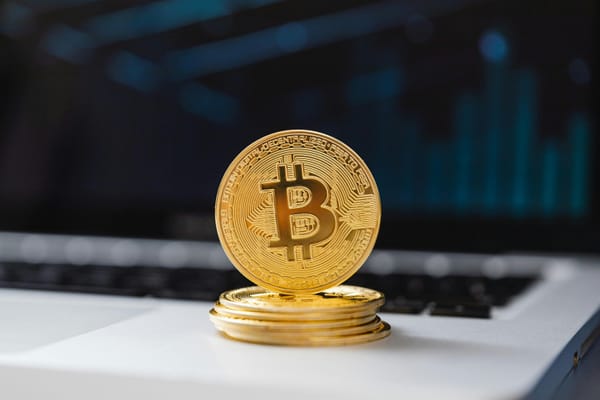FTC Warns of Utility Barcode Payment Scams. Here’s How You Can Stay Safe

Scams are becoming increasingly sophisticated, with fraudsters devising new ways to trick consumers. A recent Federal Trade Commission alert sheds light on the latest tactics employed in utility scams -- sending barcodes that appear to be from utility companies, urging you to make a payment.
“Getting an urgent call from what sounds like your utility company might make you think: Did I forget to pay my bill? The caller says there’s a way to avoid shutoff and fees: they’ll send you a barcode by text or email so you can pay at a local retailer like Walgreens, CVS, or Walmart. Don’t. It’s all a lie,” the FTC warned.
You can read more about utility scams in this article.
How The Scam Works
The utility scam typically begins with an unsolicited phone call, but scammers may also contact victims via email or text message, or even send physical letters that look like genuine correspondence from utility companies.
The messages claim that your account is overdue or that an urgent issue requires immediate payment. To make the request look legitimate, the scammer includes a barcode they want victims to scan at a payment kiosk at a local store.
One victim also shared their story with the BBB:
“They said they had not received payment on account but both checks had been cleared at bank, said power was to be disconnected at one o'clock pm that day,” the victim explained. “They told me to go to Walmart to send money, they sent me a barcode by text told me to show clerk at service desk. I did, clerk knew right away that it was a scam.”
What Happens If You Fall For It?
Scanning the barcode or following the payment instructions can seriously inflict serious financial losses. Instead of paying an actual bill, you send the money directly to the scammer, which could result in late fees, service interruptions, or your utility provider disconnecting you. In some cases, scanning the barcode might also lead to malicious websites designed to harvest your personal and financial information. This could result in identity theft and even long-term damage to your credit.
Five Red Flags You Need To Watch For
Here are some telltale signs that a barcode payment request you received might be a scam:
- The request is unexpected: If you’ve always received your bills through mail, email, or a secure company portal, a sudden request for payment via barcode is a huge red flag.
- The message uses urgent language: Scammers create a sense of urgency, claiming that immediate payment is needed to avoid disconnection.
- Unusual payment methods: Be wary of any payment request that pushes you into paying through an unfamiliar method.
- Poor Communication: While scammers are getting better at mimicking legitimate company communications, you may still find typos, grammatical errors or unusual phrasing in scam-like correspondence.
- Direct contact from the utility company: Legitimate utility companies will rarely, if ever, ask customers to make payments outside of their official portals, so be extra wary of such requests.
What To Do If You Receive a Barcode Payment Request
If you receive a barcode payment request, do not scan it or make a payment. Take these steps instead:
1. Check the legitimacy of the request: Contact your utility company directly using a trusted phone number or their official website (not the phone number or contact information provided in the unsolicited message). Ask the company if they sent the payment request and verify the status of your account.
2. Report the scam: If you determine the request is fraudulent, report it to your utility company, local authorities, and the Federal Trade Commission (FTC) to help prevent others from falling victim.
3. Monitor Your Accounts: If you’ve already scanned the barcode or provided any personal information, begin monitoring your bank accounts and credit report for any unauthorized activity. Immediately notify your bank or credit card company, and your local law enforcement agency. If you want additional safeguards, consider using Bitdefender Identity Theft Protection offering continuous monitoring of your identity, privacy and credit status.
4. Educate your friends and family: Awareness is one of the most effective tools against scams, so spread the word about utility barcode payment scams with your family, friends and colleagues.
5. Use dedicated scam detection tools: To further protect yourself from scams, incorporate Bitdefender Scamio into your online security strategy, and stay ahead of fraudsters.
Scamio can pick up on fraud attempts from texts, messages, emails, images, and QR codes. Additionally, you can describe a suspicious situation and Scamio will provide you with an instant assessment on whether you may get scammed. Scamio is free and available on Facebook Messenger, WhatsApp and your web browser. You can also help others stay safe by sharing Scamio with them in France, Germany, Spain, Italy, Romania, Australia and the UK.
tags
Author
Alina is a history buff passionate about cybersecurity and anything sci-fi, advocating Bitdefender technologies and solutions. She spends most of her time between her two feline friends and traveling.
View all postsRight now Top posts
How Do You Manage Your Passwords? We Ask Netizens
December 18, 2025
Cybercriminals Use Fake Leonardo DiCaprio Film Torrent to Spread Agent Tesla Malware
December 11, 2025
FOLLOW US ON SOCIAL MEDIA
You might also like
Bookmarks







